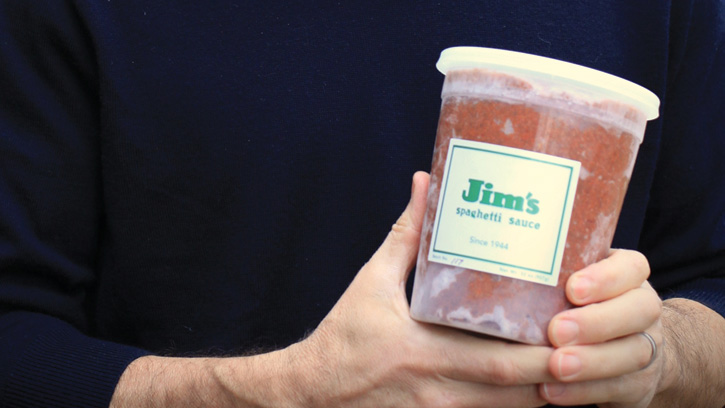From Family Recipe to Retail Shelf
Startups & Innovators | INNOVATIONS
Dane Carder’s grandfather opened Jim’s Steak & Spaghetti House in Huntington, W. Va., in 1938. A James Beard American Classics Award winner in 2019 for its “timeless appeal,” the restaurant has a dish that stands out from the rest—spaghetti. Today, Carder is working to bring his grandfather’s beloved spaghetti sauce to more Americans.
From a shared commercial kitchen in Nashville, Tenn., he spent more than a year figuring out how to replicate the sauce on a larger scale, cooking it in the same kind of 40-gallon steam kettle the restaurant has used for 80 years. In 2022, Carder moved into a USDA-certified facility with plans to distribute and sell the frozen sauce throughout the United States. Food Technology talked to Carder about the challenges of first-time retail product development.
Why do you think the spaghetti sauce resonates with people so much?
People love it here [in Nashville, Tenn.] just like they’ve loved it in Huntington [W. Va.] for 75 years. And for the same reasons. People like the convenience of a product that tastes like it’s been cooked for six hours, because it has, but you’re going to have it done in 20 minutes. There’s still not a frozen spaghetti sauce with meat in it in the freezer section. I don’t know if that’s the “Golden Ticket,” but I don’t know why that product is not out there, so I want to do it.
What were the hardest parts of going from phase one, selling a sauce locally from a shared kitchen, to phase two, preparing for a national rollout?
I am a creative type, but I had to put together this binder with all the appropriate forms—a HACCP plan, recall plan, water potability, and SOPs—and it’s just not in my wheelhouse. I hit the wall half a dozen times where I was just, “White flag! I cannot do this.” I got a couple of estimates from consultants, but I was spending all this other money and I didn’t have an extra $6,000 to put together a binder. Eventually, I found somebody in Atlanta who would help clean it all up and put it together for less than that. I felt good about that decision ... Phase one was a walk in the park. But phase two? Last year was the hardest year of my life.
You’ve been doing this as essentially a one-man show. Is it time to hire someone to help you go national?
Yes. I have been [interviewing] people. It would be great to have somebody cook and pack it and help build an inventory with spreadsheets for retail distribution. Someone to help me figure out what that model looks like. It needs to include how to keep track of inventory and delivery dates.
I also want to fashion a business model for a lunch counter [next door to the commercial kitchen, where people can grab-and-go ready-to-eat sauce and spaghetti]. I’d like someone to figure out a preorder website and help implement my ideas.
Up next, you’ll be facing things like slotting fees and the like. What’s your approach for getting in grocery stores?
We’re slowly building retail accounts with mid-level stores, not Kroger or Publix. We’re going to the Produce Place and the Turnip Truck as I’ve heard from other farmers market vendors that [those grocers] sell their stuff. But once we get outside of greater Nashville—to Chattanooga [Tenn.] or Birmingham [Ala.]—the only way they’re going to [discover us] is if I have somebody there doing samples. About 75% of people who taste the sauce at the [Nashville] farmers markets buy it.
What advice do you have for chefs who want to get their recipes on retail shelves?
Trust your vision but ask for help.


